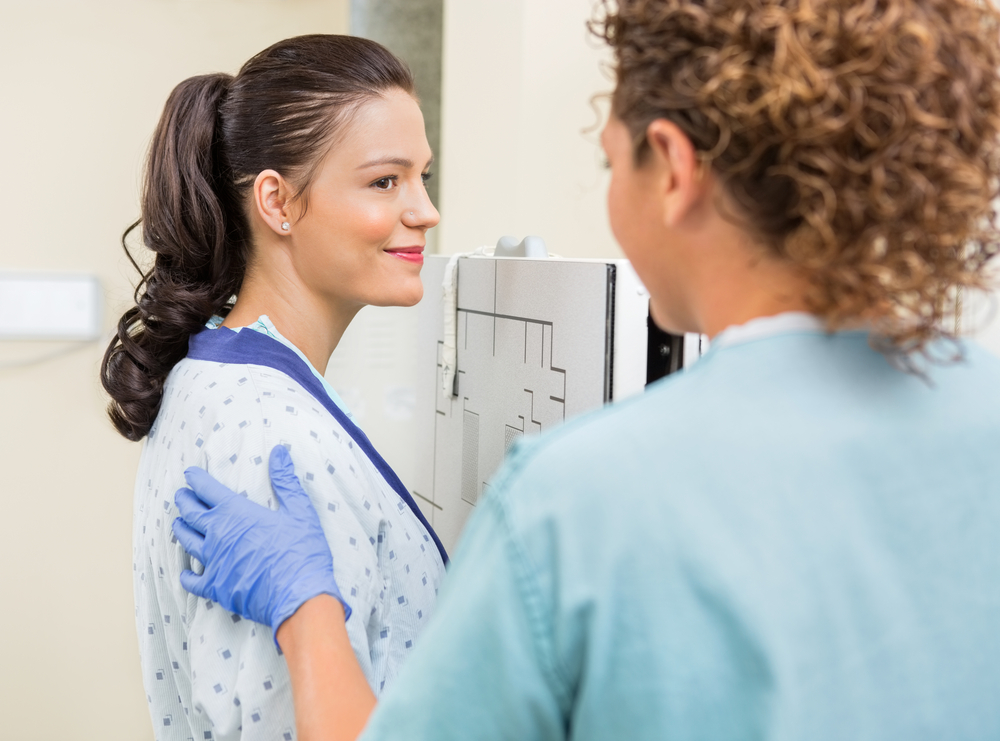Testing … 1, 2, 3


Knowing my capacity for adaptation, I always struggle to answer when doctors ask, “How do you feel today, compared to how you felt a year ago?” My answer tends to be, well, “Pretty much the same,” every time. As irritating and painful as they can be, I appreciate tests that allow me to quantify my progress more concretely.
Transplantation comes with lifelong medication and monitoring – a message my nurse coordinator emphasized during my training. Honestly, it didn’t sound any different from life with pulmonary hypertension (PH). The following list of regular tests I’ve undergone since my PH diagnosis in 2000 explains how their use has changed since my heart-lung transplant.
Six-minute walk tests
Six-minute walk tests are as high-tech as I am sarcastic: I walk up and down a hallway as fast as I can for six minutes. The technician checks my vital signs and I rate my shortness of breath.
It seemed that whenever I pushed myself to walk as far as I could, my doctors would obsess over how low my oxygen saturation had dropped with exertion, and whenever I tried not to overdo it, they would obsess over how little distance I had covered. It was an Olympics-like event that would make-or-break my future, and the judges had bias against me.
I had one final six-minute walk test when I completed pulmonary rehab post-transplant. I grinned the whole time.
Cardiac catheterizations (caths)
Caths are the only way to officially diagnose PH. The surgeon threads a long thin hollow tube called a catheter through my blood vessels to measure the pressure in my heart. Unfortunately I was wide awake for my first cath at age six, cementing the experience in my memory. The screen to my left played Aladdin in an attempt to distract me from the surgeons inserting a needle into my groin. A nurse closed the door when my screaming grew louder.
I have been awake for all my caths as an adult, and they’ve improved as my pain tolerance and ability to control my anxiety has improved. I’ve had one cath since my transplant, and it will be years before I need another.
Echocardiograms and electrocardiograms
Both are essentially nap time with some stickers on my chest. Echocardiograms take a lot less time now that the technicians say my heart “takes very good pictures,” and don’t have to bring others into the room to help them interpret the complexities of my sick heart. I’ve only had to have a couple since my transplant, and expect to have one per year going forward.
X-rays
I thought I’d had a lot of radiation before my transplant, but I’ve probably doubled that amount in the past year. After my surgery, there were some days when I had three separate X-rays. Now I have a chest X-ray every time I have an appointment, usually with a student who takes several minutes to position my body just so. I roll my shoulders forward, and sometimes roll my eyes, being the impatient patient that I am.
Blood work
When I had PH, I complained about the monthly blood tests to monitor how well my blood thinner was doing its job. Now I’m lucky to go a couple weeks between checking my Prograf level and blood counts.
Pulmonary function tests (PFTs)
PFT results weren’t so important before my transplant. I can’t even tell you what my FEV1 was. Nose clips in place, I breathe through a tube with a mouthpiece that fits around my teeth.
“Three normal breaths. Good. Deep breath in. Now blast it all out! Keep going … blow it all out … more … great job.”
My transplant team measures the volume of air my lungs expel in one second to detect possible infection or rejection.
Bronchoscopies
Bronchoscopies conclusively test for rejection or infection in my lungs. I had four in the first year after transplant. I eventually will need only one each year.
I hated bronchoscopies until I had a heart biopsy. Luckily, my doctors tell me they will detect rejection in my transplanted lungs before it reaches my transplanted heart. Now I am perfectly happy to put on an oxygen cannula, inhale nebulized lidocaine, and open my throat so a physician can sample pieces of my lung tissue. I’m given conscious sedation, but with my tolerance for narcotics, the emphasis is on conscious, and I’ve overheard some interesting conversations.
For the most part, my testing regimen has remained the same pre- and post-transplant. I no longer do six-minute walk tests, and I have fewer cardiac catheterizations, echocardiograms, and EKGs. I do more X-rays, blood work, PFTs, and have added heart and lung biopsies. The stark difference is that my test results frequently show improvement, and include words like “normal.”
***
Note: Pulmonary Hypertension News is strictly a news and information website about the disease. It does not provide medical advice, diagnosis, or treatment. This content is not intended to be a substitute for professional medical advice, diagnosis, or treatment. Always seek the advice of your physician or other qualified health provider with any questions you may have regarding a medical condition. Never disregard professional medical advice or delay in seeking it because of something you have read on this website. The opinions expressed in this column are not those of Pulmonary Hypertension News or its parent company, Bionews Services, and are intended to spark discussion about issues pertaining to pulmonary hypertension.








Leave a comment
Fill in the required fields to post. Your email address will not be published.